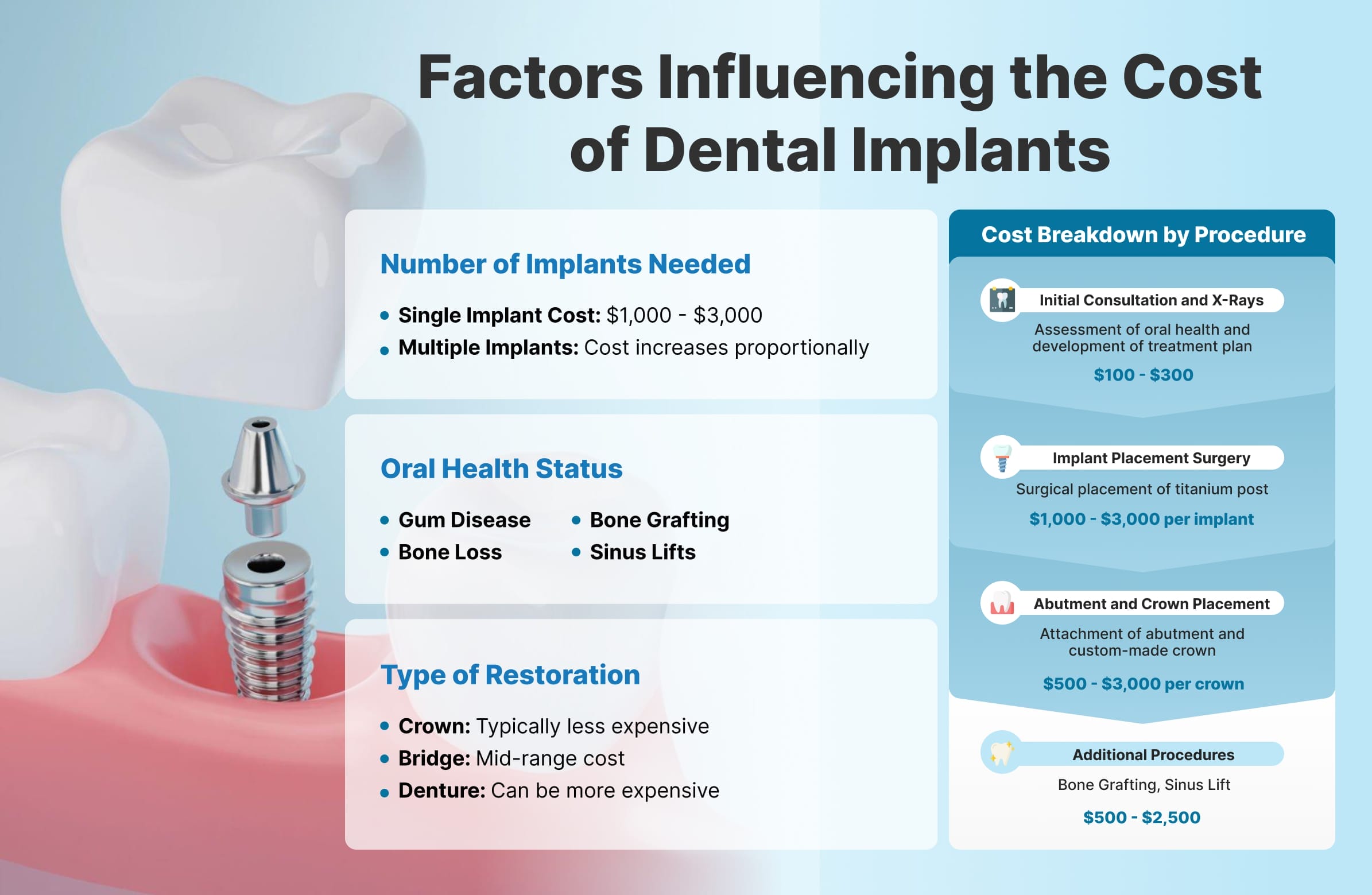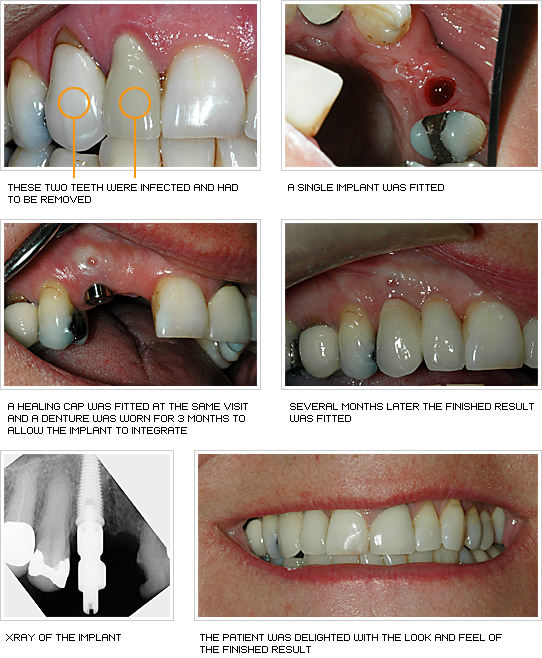The Basic Principles Of Dental Sense
The Basic Principles Of Dental Sense
Blog Article
Getting My Dental Sense To Work
Table of ContentsNot known Incorrect Statements About Dental Sense Top Guidelines Of Dental SenseThe 8-Second Trick For Dental SenseThe 2-Minute Rule for Dental Sense
are medical gadgets operatively implanted into the jaw to recover a person's capability to chew or their appearance. They give assistance for artificial (fake) teeth, such as crowns, bridges, or dentures. When a tooth is shed due to injury or disease, an individual can experience problems such as quick bone loss, defective speech, or modifications to chewing patterns that result in pain.Oral implant systems are composed of a dental implant body and oral implant joint and may also consist of an abutment fixation screw. Dental implant vs bridge. The oral implant body is operatively inserted in the jawbone in area of the tooth's root. The oral implant abutment is usually connected to the implant body by the joint fixation screw and expands through periodontals into the mouth to sustain the attached man-made teeth
(https://dentalsense.godaddysites.com/f/transform-your-smile)Framework of The Oral Implant System choosing dental implants, talk to your dental company about the possible benefits and threats, and whether you are a prospect for the treatment. Things to take into consideration: Your overall health is an important consider figuring out whether you are a great candidate for oral implants, for how long it will take to recover, and just how long the implant may stay in area.
Smoking cigarettes may influence the healing process and reduce the lasting success of the implant. The recovery procedure for the implant body may take several months or longer, during which time you typically have a short-lived abutment in area of the tooth. the oral implant procedure: Carefully follow the oral hygiene directions provided to you by your oral service provider.
Some Ideas on Dental Sense You Should Know
Implant failing can cause the demand for another medical treatment to deal with or replace the dental implant system. Restores the ability to eat Recovers cosmetic look Assists maintain the jawbone from shrinking because of bone loss Protects the health of the surrounding bone and gum tissues Helps keep nearby (nearby) teeth stable Improves top quality of life Damages to bordering all-natural teeth during dental implant positioning Injury to the surrounding cells during surgical treatment, such as sinus opening Injury during surgery (for instance, fracture of bordering jawbone) Insufficient function, such as seeming like the teeth do not attack with each other normally A sensation that the tooth hangs or turning in location resulting from an abutment screw loosening Implant body failure (looseness of the dental implant body) due to systemic infection, which may be most likely in individuals with uncontrolled diabetes because of regional infection in bone and gum tissues sustaining the implant body because of postponed healing, which may be more probable in people who smoke Problem cleaning the periodontals around the implant, causing inadequate dental health Untreated gum condition Post-surgical numbness due to nerve impingement or damage Always inform healthcare suppliers and imaging service technicians that you have dental implants prior to any kind of magnetic vibration imaging (MRI) or x-ray procedures.
FDA is not familiar with any kind of negative occasions reported for MRI or x-ray treatments with dental implants. Oral implants systems are generally constructed from products that comply with worldwide agreement standards of the International Organization for Standardization (ISO) or ASTM International. These requirements have information of what makes a safe product.

A dental implant is a structure that changes a missing tooth. With screw-like tools, the specialist inserts a dental implant right into the jawbone, and it functions as an anchor for a man-made tooth, called a crown. A gadget called a joint links the man-made tooth to the dental implant. The crown is customized to fit the individual's mouth and match the shade of their teeth.
Excitement About Dental Sense
Some individuals are not eligible for oral implant surgery. It is for oral specialists to operate on individuals with: acute illnessuncontrollable metabolic diseasebone or soft cells illness or infectionIf these issues are solved, a person can have the surgical treatment. In, oral doctors avoid operating people with: If people with any one of the above undertake dental implant surgery, there is a greater danger of the dental implant failing.

Oral dental implant surgical treatment is a customized procedure. It's not the exact same for everyone. The adhering to provides a general overview of what you can expect your dental professional, dental specialist, periodontist or prosthodontist to do: Place the implant operatively. Offer you time to recover. Affix the post and final crown, bridge or denture.
Next off, your surgeon will very carefully place the dental implant into your jaw. Your surgeon will rearrange your gums and shut the laceration with stitches. If your dental implant is near the front of your mouth, your dental practitioner will make a short-lived tooth for you to put on until you heal. By doing this, you won't have a gap in your smile while you recover.
Dental Sense for Beginners
Your company can tell you what to anticipate in your situation. Throughout the healing stage, your jawbone ought to fuse to the oral implant. This process, called osseointegration, is crucial for stability and long-term success. This process can take anywhere from 3 to 9 months. Sometimes, it might take longer.
Once your implant heals, your dental expert can affix the joint (small connector article) and your final restoration (crown, bridge or denture). This usually takes regarding one hour to finish and may call for a second small surgery. You should not really feel any kind of discomfort during your oral implant procedure because your service provider will certainly use drug check out this site to numb your periodontals.
Report this page